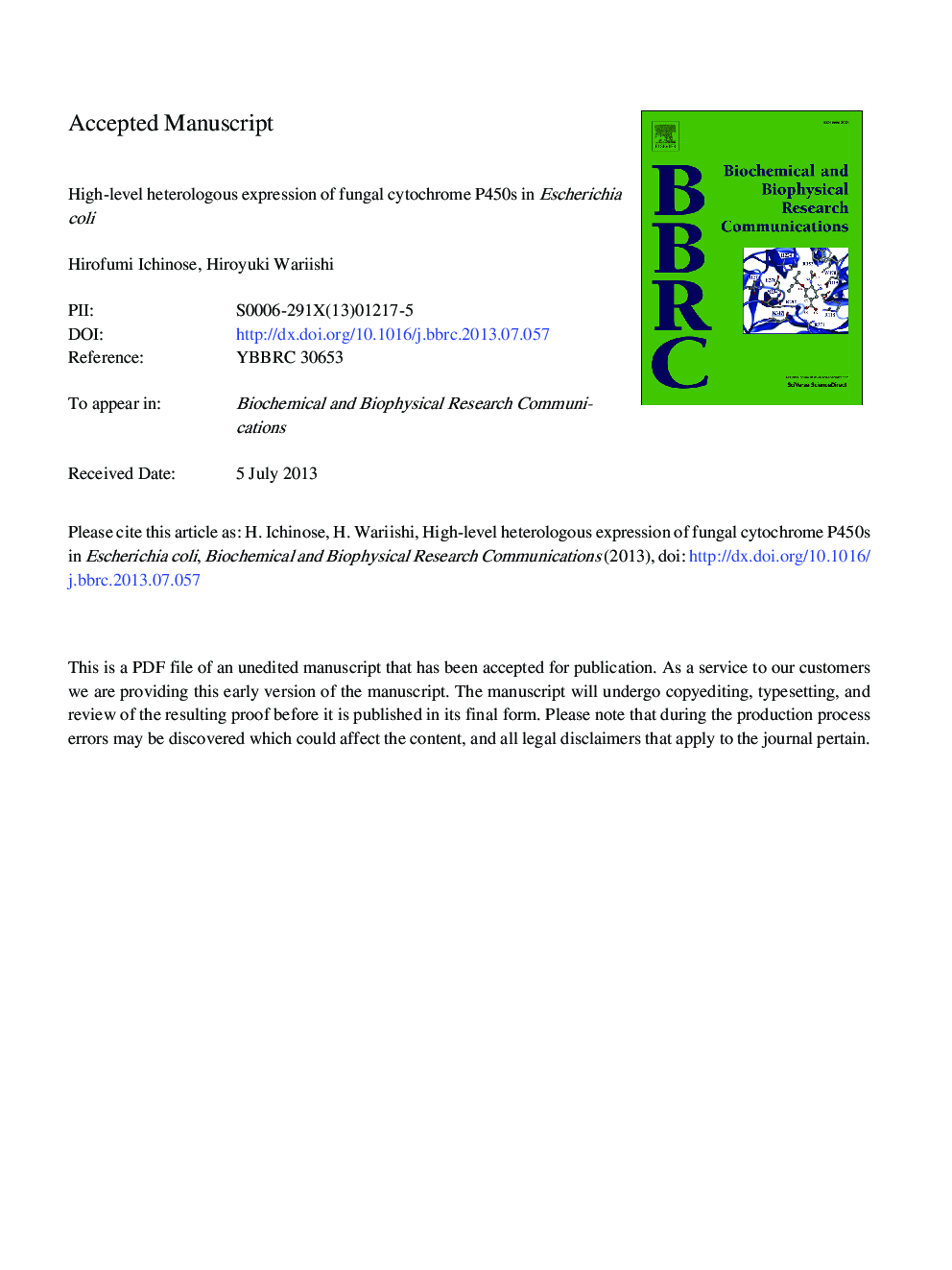| Article ID | Journal | Published Year | Pages | File Type |
|---|---|---|---|---|
| 10758060 | Biochemical and Biophysical Research Communications | 2013 | 38 Pages |
Abstract
A thorough understanding of the sequence-structure-function relationships of cytochrome P450 (P450) is necessary to better understand the metabolic diversity of living organisms. Significant amounts of pure enzymes are sometimes required for biochemical studies, and their acquisition often relies on the possibility of their heterologous expression. In this study, we performed extensive heterologous expression of fungal P450s in Escherichia coli using 304 P450 isoforms. Using large-scale screening, we confirmed that at least 27 P450s could be expressed with/without simple sequence deletion at the 5â² end of cDNAs, which encode the N-terminal hydrophobic domain of the enzyme. Moreover, we identified N-terminal amino acid sequences that can potentially be used to construct chimeric P450s, which could dramatically improve their expression levels even when the expression of the wild-type sequence was unpromising. These findings will help increase the chance of heterologous expression of a variety of fungal and other eukaryotic membrane-bound P450s in E. coli.
Keywords
Related Topics
Life Sciences
Biochemistry, Genetics and Molecular Biology
Biochemistry
Authors
Hirofumi Ichinose, Hiroyuki Wariishi,
